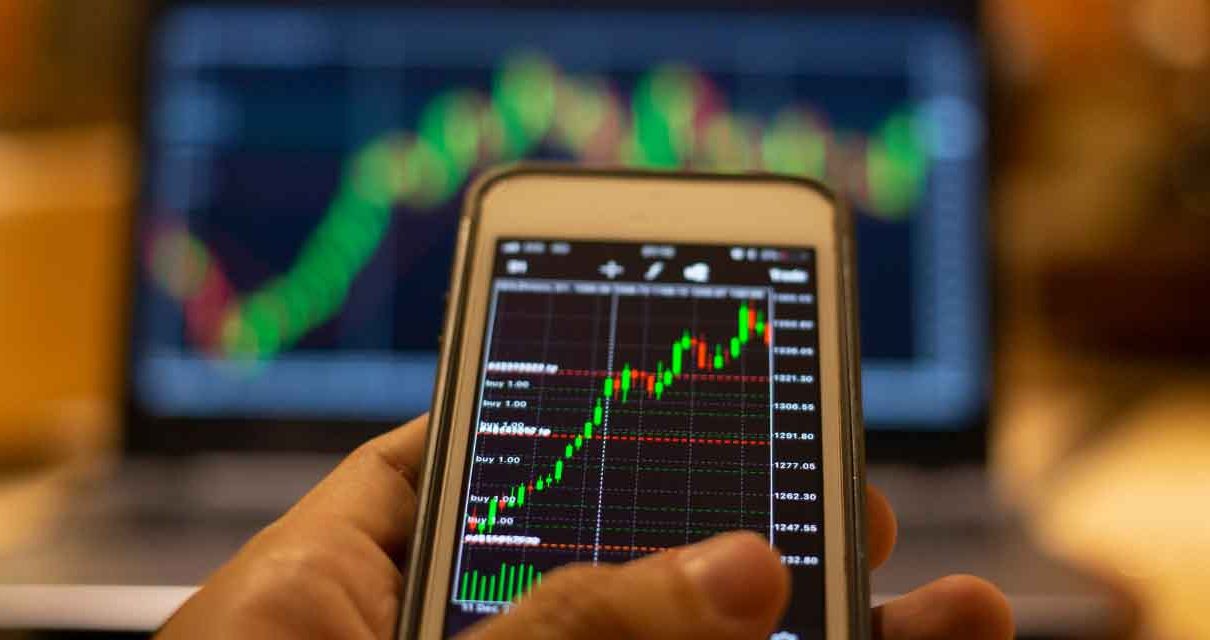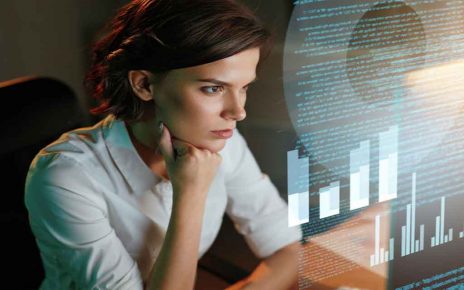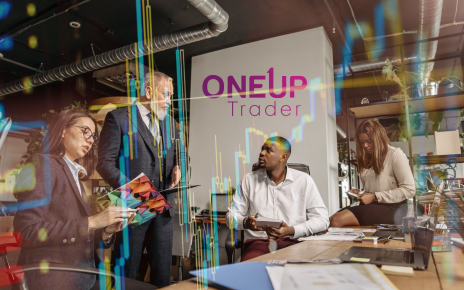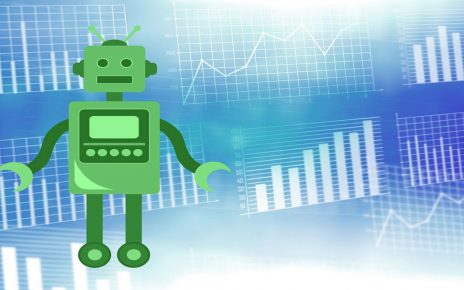Have you ever wondered what Forex is or how it works? Or, if you already know about it, but you are interested in knowing how to invest in this market and generate substantial profits, this article is for you.
It will allow you to understand what determines and how prices are generated in the currency market when it is convenient to invest, what are the pros and cons of doing so, and the basic concepts you should know before getting into Forex.
Forex trading for beginners could be complicated; learning the basics of how currencies are traded is the first step.
Are you ready to know what is forex trading and how does the forex market work?
Do you know how you can start trading with no money? Read Who can Become a Funded Trader now!
What is Forex, and how does it work?
In a nutshell, the Forex market, or foreign exchange market, is where currency trading takes place. For example, Mexican Pesos are exchanged for Japanese Yens.
Its name, the acronym for Foreign Exchange market, resonates around the world for being the largest financial market. Since its emergence, the volume traded has increased exponentially, reaching 6,595,471 million U.S. dollars per day (averages) in 2019.
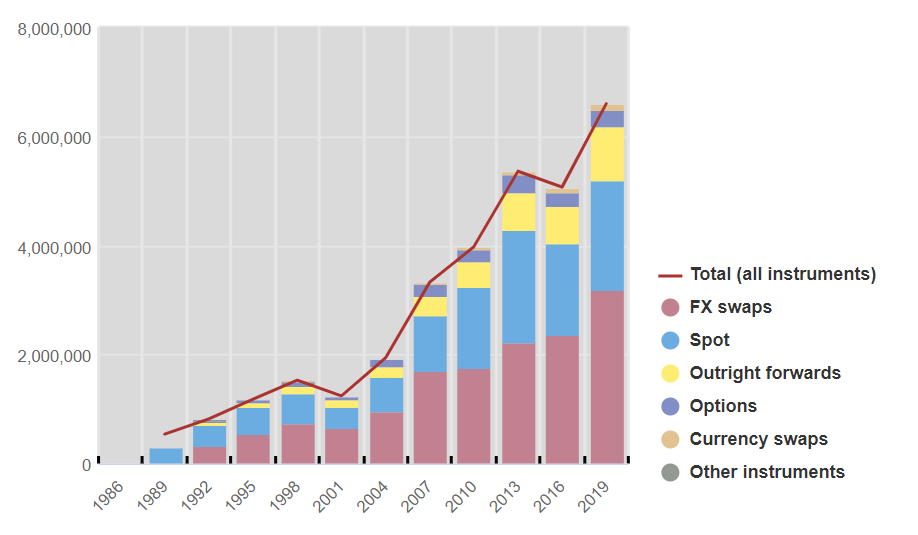
Now, you are probably wondering what are the “currency pairs” that are traded on Forex and what is the purpose of doing so. If you visit any trading platform, you will see expressions such as:

This pair is made up of the Euro (EUR) and the US Dollar (USD). Each currency is represented by a three-letter ISO code, where the first two letters indicate the country or region of origin (EUR/USD in the example).
In this case, the Euro is the “base currency” and the Dollar is the “quote currency”, so 1.21160 represents how many Dollars are needed to buy 1 Euro. Currency traders in this market speculate on the evolution of this “exchange price” in order to make a profit. They buy or sell the exchange rates.
Currency pairs can be grouped into four categories:
Major pairs:
Majors are responsible for most of the world’s currency trading volume. EUR/USD, USD/JPY, GBP/USD, AUD/USD, USD/CAD, USD/CHF and NZD/USD make up this group. The first one alone accounts for 30% of the total Forex trading volume.
Minor pairs:
Minors are less frequently traded and do not include the US dollar. Alternatively, they are called currency crosses and among the major ones, you can see EUR/GBP, EUR/AUD, GBP/JPY and EUR/CAD.
Exotic pairs:
These are generally composed of a currency of a developed economy and a currency of a developing country. They are characterized by high volatility, low liquidity and larger spreads (difference between the ask price and the bid price). Examples are USD/BRL, USD/ZAR or USD/RUB.
Regional pairs:
Other currencies, as in this case, pairs are formed by region, where the U.S. dollar is generally included as the base currency. For example: in Africa, you can find USD/SOS or USD/AOA.
Although this may seem abstract to you, currency exchange is more tangible than you think. It is present when you buy a product from another country, when you take a trip to another continent, among other activities of daily life.
The exchange rate and the differentials in interest rate
Understanding what the exchange rate is and what the differentials in interest rate are, is fundamental when you start trading Forex.
The exchange rate is the value of one currency in terms of another, as we saw with the EUR/USD pair. In most cases, the exchange rate can fluctuate freely; therefore, it will depend on the behavior of the FX market, in terms of supply and demand of the currencies involved. However, some countries choose to restrict the fluctuation of their currency or decide to “peg” its value to another currency.
The exchange rate can be influenced by the temporality of the operation and by expectations about its future behavior. Thus, the “spot” exchange rate, which represents the current market value, may differ from the value of the forward exchange rate. It is in these cases that fundamental analysis becomes important, for example, through a country’s economic news.
Simultaneously, Forex traders analyze the interest rate differential in a currency pair. As its name suggests, it refers to the difference in the interest rate of two currencies and is equivalent to the profit you can generate by selling the currency with the lower interest rate to buy the one with the higher interest rate. By identifying this differential, you can do what it is called a “carry trade”.
What moves the forex market?
You are probably wondering who are the favorite players in this market… and the answer is that they are many and of different types. The main ones are:

Investment fund managers. Individual investors
Large multinational companies
Central Banks. Commercial or investment banks
There is a Central Bank in most countries or economic zones. The most important is the Federal Reserve (Fed – U.S. central bank). It is in charge of regulating the national monetary policy, which implies defining interest rates or exchange rates that affect open market operations.
They can even influence other areas of the economy. For example, they may intentionally cause their currency to devalue to make their exports more competitive. Actions from central banks impact not only the forex market, but financial markets in general.
Through the interbank market or electronic networks, commercial and investment banks can exchange currencies with each other to increase their equity or meet legal requirements for their operation. In addition, they offer their clients services involving foreign exchange transactions such as buying/selling foreign currency.
International companies that import and export goods or services constantly carry out foreign exchange transactions in order to operate, as they are involved in the entire production chain.
Finally, investment managers or individual investors also participate in the Forex market. The former manage portfolios, investment funds or hedge funds and conduct foreign exchange transactions through large accounts such as pension funds. Retail investors trade in low volume, although their popularity is currently on the rise.
Forex trading hours

Unlike other markets, Forex operates 24 hours a day, 5 days a week, thanks to the time difference between countries. For example, when it is 10 a.m. in New York, it is 11 p.m. in Hong Kong.
In some time zones, at least two of the most important stock exchanges (located in London, New York, Sydney and Tokyo) are open simultaneously. These “time windows” are conducive to trading, as there are a greater number of bidders and askers, and volatility (both price and volume) is higher.
An example of such a “time window” occurs between 8 a.m. and 12 a.m. (Eastern Standard Time), when the New York and London stock exchanges are open. That means you can trade 24 hours a day five days a week; unlike the stock market or other financial markets that have a limited trading schedule.
Why do investors go to forex markets?
There are many reasons why people can make a forex transaction. From the necessity of exchanging a currency for another, to pure speculation; from investing to managing risks.
Forex for hedging vs Forex as speculation
Although most traders use Forex for speculation and profit, some traders use it to offset their exposure to price movements, i.e. to reduce risk. This involves opening a buy and sell position for the same level of risk, on the same asset or two different assets (preferably correlated). In this way, you will be able to maintain the profitability of the operations and avoid closing positions.
Companies can use forex and futures markets to avoid the risk of price fluctuations (hedging); at the same time they can use it to speculate in order to make a profit.
Currencies as an asset class
Mainly there are three main asset classes: fixed income (bonds), equity markets and money markets. The forex market is equivalent to cash, so it could be placed in money markets. Using forex as an asset class means that investors will have a proportion of their capital in the FX market.
Carry trade
This is a concept you should be aware of if you want to take full advantage of interest rate differentials, especially if you can obtain funds at a low cost. It consists of borrowing currencies with low or negative interest rates, such as the Japanese yen, and buying emerging market currencies, such as the Turkish lira, with high yields.
This process occurs mainly between developed countries and emerging economies since the former are more stable and set low or negative interest rates to stimulate demand, while the latter set higher interest rates to limit capital outflows and regulate the economy.
Types of forex markets
There are different types of transactions you can make within Forex, which give rise to different “types of markets”. The main ones are:
Spot Forex Market
Intended for quick transactions with currencies, where sellers and buyers operate at the current exchange rate, collecting or paying cash (in cash, with checks or bank transfers), respectively. Central banks, commercial banks and individual traders participate in this market.
Forward Forex Market
Unlike the previous market, transactions are carried out through forward contracts between two parties. The participants agree on the date, price and amounts for which they will trade, without delivering any deposit in exchange.
Traders resort to this market for risk hedging or for speculation. The latter case is typical of those who know the markets well or analyze how the price may vary in the long term. The lack of liquidity or the possibility of non-fulfilment of the contract by the counterparty, are risks that you can run if you decide to invest in this market.
Futures Forex Market
This market remedies some of the risks associated with the previous market. It does so through standardized contracts and centralized trading on a stock exchange, such as BSE. The futures forex market also eliminates the risk of counterparty default by involving a third party, a clearing corporation, which guarantees the exchange.
Finally, it has greater liquidity, since an unlimited number of people can participate simultaneously in the same transaction.
Basic concepts of Forex
In addition to the types of markets in Forex, interest rate spreads and exchange rates, there are other concepts that you should know before you start investing.
What is a lot in forex trading?
A lot refers to a certain amount of assets or products (in this case, a currency pair) that are traded together. According to their dimensions, there are four types of conventional lots: the standard lot, composed of 100,000 units of any currency; the mini lot of 10,000; the micro lot of 1,000; and the nano lot of 100 units.
However, traders can also trade using non-standard lot sizes. This volume measure will be useful when analyzing pip variations.
What is leverage in forex trading?
Like many, you may be determined to start investing, but you don’t have enough money to get started, but… no problem, most trading is done using leverage. This involves borrowing money from a broker in order to invest. You can consult our advisory and financing services, so you can find the plan that best suits your needs.
To better understand this concept, suppose you have USD 1,000 in your brokerage account. With that money, you can trade up to USD 100,000 in the market. Therefore, the leverage was 100:1.
You should be cautious when investing with leverage, as both profits and losses can grow exponentially if the risk is not properly managed.
What is the spread in forex trading?
Spread is the name given to the difference between the bid and ask price of an asset, particularly currencies. Both prices include other components that are usually hidden, such as transaction costs and commissions. It can be fixed or variable and is always proportional to the volume traded.
What is a pip?
You may have never heard of this abbreviation, but a “pip” is a standardized measure of the smallest change a currency quote can undergo. To visualize this, assume that you buy in your trading account one mini-lot of EUR/USD of 10,000 units at the exchange rate of 1.2110. If there is a one pip increase in this rate to 1.2111, your equity will likely increase in one dollar.
How do traders invest in Forex?
In order for you to trade in Forex you need to:
- Have a brokerage account to hold the currencies you buy (trading platforms).
- Have a trading balance (capital).
- Define the level of risk you want to face, the strategy you consider most important for trading, etc.
- Encourage you to start investing! You will have to generate orders to trade forex and then control your investment.
From OneUp Trader, we can help you all the way with futures trading, including the last step. Whether you are a new trader or an experienced one, we can provide you with financing to start investing and all you need for trading, avoiding the second step.
After completing the Trading Evaluation program, in order to evaluate your trades in real-time, you will be ready to obtain funds from one of our partners and start investing in your future.
Check OneUp Trader offering in Futures accounts
Pros and cons of forex trading
Every investment has its risks, and trading Forex is no exception. It is a highly volatile and unpredictable market (depending on the instrument used for trading), in addition to other risks intrinsic to trading.
However, it also has many advantages. Mainly, it allows you to diversify your investment portfolio and trade 24 hours a day, taking advantage of news and events occurring in other parts of the world.
Should I trade the foreign exchange market?
Now that you know the foreign exchange market, how it operates and what risks you have to face, the decision to start investing is yours. From OneUp Trader we want to encourage and support you, providing you with financing and advice. You have all the tools and information, just a click away.
OneUp Trader offers funded trading accounts to operate the futures markets. It also provides a one-step evaluation process and provides up to 250,000 dollars funding for trading accounts.
Trading with world currencies or future contracts may not be suitable for all investors; there is one way to know if it is good for you.


